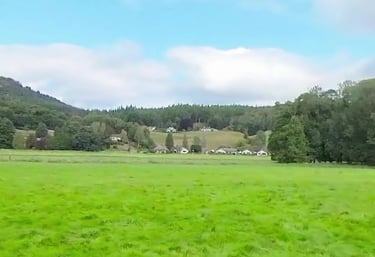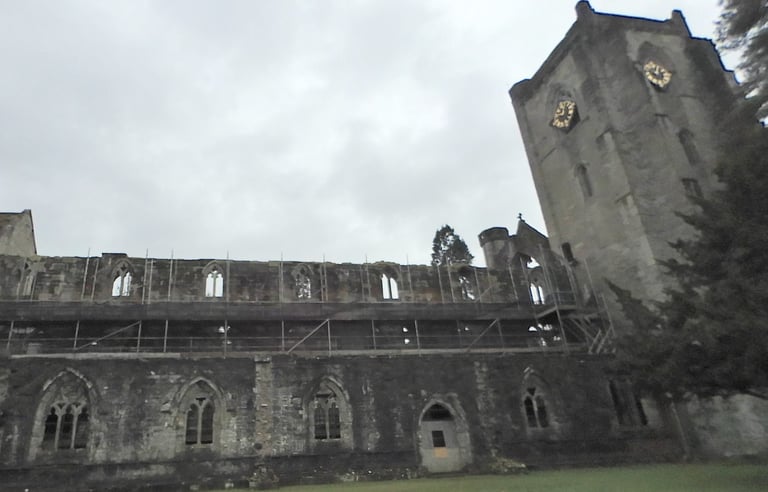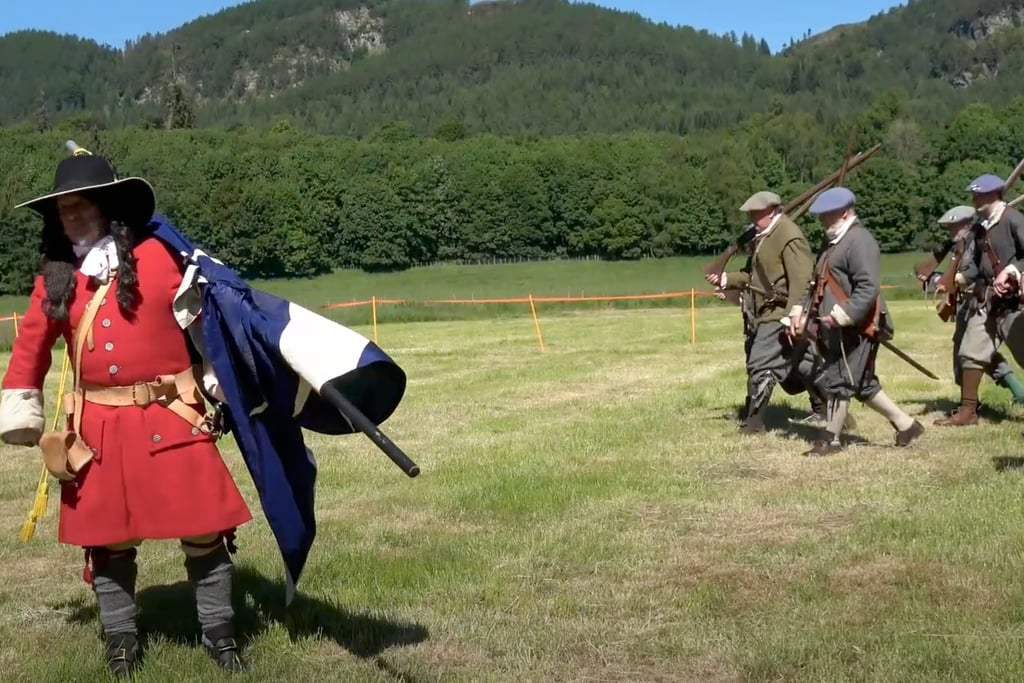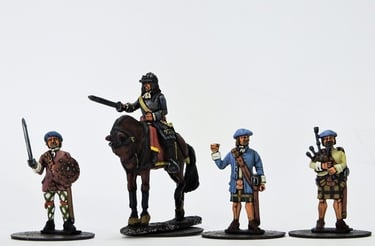The Battle of Dunkeld: A most significant battle of the Jacobite Rising in 1689
Dunkeld, is a small town in Perth and Kinross, and on 21st August 1689 it was held by a garrison of Government troops from the Cameronian Regiment under Lieutenant-Colonel William Cleland’s command. It was a desperate struggle fought around the cathedral and in the streets of the town, many buildings of which were burned to the ground. If the Jacobites had won here, the road to Perth, a weakly held city and strong Jacobite sympathies, would have been open.
Richard Bird
1/28/202410 min read


Background: The Jacobite Rising of 1689
After Viscount Dundee's demise in the Jacobite triumph at the Battle of Killiecrankie, leadership of the Jacobite forces shifted to Colonel Alexander Cannon. Despite the seasoned 60-year-old veteran Sir Ewen Cameron of Lochiel being one of the most formidable Highland chiefs, command was bestowed upon Colonel Cannon, the leader of the Irish recruits. This decision deeply offended Cameron, prompting him to depart, accompanied by members of his clan. As the Scottish Privy Council anticipated a looming Jacobite attack and prepared to evacuate Scotland, they directed the newly formed Cameronian regiment, led by Lieutenant Colonel William Cleland, to relocate from Perth to Dunkeld, emphasizing the imperative to defend the town at any cost.
The Cameronian Regiment at Dunkeld: Prelude to battle
The Cameronian regiment takes its name from Richard Cameron, a Scottish religious reformer and covenanting leader from the Scottish Lowlands, and was raised largely from the tenantry of the Marquess of Douglas, chief of Clan Douglas. Its commander was 28-year-old Lieutenant Colonel William Cleland, a veteran of Drumclog and Bothwell Bridge in 1679.
No uniforms had been issued to the regiment, so the Cameronians would have been wearing their civilian clothing and not the standard-issue red coats, that would happen later in October It is possible that some of the officers may have worn red coats. They numbered between 700 and 800 men, although their initial muster strength was listed as around 1200 men. They were formed into 10 companies but had no grenadier company.
Before marching to Dunkeld, the regiment was initially issued with 400 muskets, 400 pikes, and 40 halberds from the magazine at Stirling Castle. Most of the muskets were matchlocks; another 200 muskets were apparently sent from Leith. The pikes and halberds (issued to sergeants) would prove useful at close quarters when fighting the highlanders armed with their sword and targe.
Cleland and his men arrived at Dunkeld on the evening of August 17. The following morning, Cleland ordered barricades and entrenchments to be constructed. Dunkeld House, a seat of the Earl of Atholl, was fortified, and holes in the walls around the house and cathedral grounds were filled in and scaffolding erected.
The Jacobites advance on Dunkeld
The Jacobite forces have been estimated at around 4,000 men, mostly highlanders. They were commanded by Colonel Alexander Cannon, who had succeeded in commanding them after the death of John Graham of Claverhouse at the battle of Killiekrankie.
Canon had received information from townsmen who had evacuated before Cleland's arrival, indicating the presence of a single Scottish regiment at Dunkeld with intentions to ravage Atholl, which Cleland quickly refuted.
Recognizing an opportunity to eliminate an isolated Scottish government force and achieve some success in what had been a relatively uneventful campaign under his command, Cannon led his Jacobite army toward Dunkeld. He was probably mindful of the approaching end of the season, anticipating that the highlanders would soon disperse homeward for the upcoming harvest.
The Battlefield Landscape
Dunkeld is situated on the northern bank of the River Tay, 15 miles north of Perth, and is surrounded by a circle of hills to the north, which includes Gallows Hill. Closer to the town, there are lower hills, such as Schiochies Hill. The town features a main street that runs westward to the Cross and then follows the southern side of the cathedral, known as Canon’s Houses. Another street, Scots Raw, branches north-westward from the Cross, creating a 'Y'-shaped street plan. Dunkeld House, a prominent mansion built in 1679 for the Marquess of Atholl by the architect Sir William Bruce, is integrated into this street layout (see map). The cathedral itself was a half-ruined structure with large houses belonging to the clergy clustered nearby, some to the west and others to the south, whose gardens sloped down towards the Tay.
Dunkeld was not protected by town walls, so Cleland ordered his troops to take up defensive positions in the cathedral because it was surrounded by an enclosing wall and the nearby mansion of the Marquess of Atholl.
The Earl of Cardross Comes and Goes
On August 19, the Earl of Cardross arrived at Dunkeld with some arms and ammunition. He had brought with him two troops of horses and three dragoons.
On the 20th, signals from campfires atop Dunkeld's hills hinted at the presence of approximately 1,000 Atholl and Strathtay men, led by Alexander Stewart of Ballechin, summoned overnight through the symbolic fiery cross. Town troops mobilized to engage them, dispatching a detachment comprising forty fusiliers and fifteen halberdiers under Captain George Munro. Fifty horsemen led by Cardross supported this force, followed by an additional thirty halberdiers under Ensign James Lockhart.
Cleland ordered the remainder of his regiment out of Dunkeld, assigning 150 men to guard Dunkeld House. The main body included 100 fusiliers commanded by Captain John Campbell and Captain Robert Hume, followed by Captain William Borthwick and Captain William Herries with 200 musketeers and pikemen.
Roughly two miles from the town, Captain Munro's detachment and Cardross's cavalry encountered 300 Jacobites in a nearby glen. The Jacobites fired upon them, causing injuries, including Cornet Livingston of Eglinton’s Horse. While the cavalry withdrew, Munro's infantry pressed forward, driving the Jacobites before them.
Upon his arrival at the scene, Cleland noticed a nearby house occupied by Jacobites and instructed Captain Munro to dispatch a sergeant and six men to secure it. Around twenty Jacobites resisted but were quickly dispersed. Cleland then fell back to Dunkeld along with Cardross’s cavalry.
The encounter resulted in around thirty Jacobites being killed, wounded, or captured, with three members of Captain Munro’s detachment sustaining injuries, one of whom succumbed later.
Annoyingly for Cleland, later that night, Cardross received orders from Colonel Ramsay to return to Perth with his cavalry, reasoning that they would be of little use on such ground. Despite protestations from Cleland, Cardross left the Cameronians to their fate.
Later that night, Cardross received orders to return to Perth along with his dragoons and horse. Despite Cleland’s protestations, Cardross had little choice but to obey when a repeat order arrived shortly after, and he duly left the disgruntled Cameronians to their fate.


A painting by Ian Shields which depicts not only the severe figting around the cathedral grounds but clearly shows the Camerons in their homespun grey and blue bonnets. An officer or NCO on the left is wearing a red coat whilst nearby is a party of pikemen. The artist demonstrating his detailed knowledge of the battle. Copyright is held by Ian Shields, who kindly allowed me to use his image.
The map showing the layout of the town and the main directions of attack.
Battle of Dunkeld: The Jacobite Army
At dawn on 21 August, Cannon’s Jacobite army, numbering 4,000 to 5,000 men, appeared on the hills to the north of the town. His force comprised a regiment of 400 dismounted Irish dragoons under Colonel Nicholas Purcell, Macleans of Duart, Macdonalds of Sleat, Macdonalds of Clanranald and Glencoe, Macdonnells of Glengarry and Keppoch, Macneils of Barra, Gordons of Strathdon and Glenlivet, Farquarsons, Camerons, Frasers, Macgregors of Glengyle, Stewarts of Appin and the Athollmen along with four troops of horse numbering 150 troopers, and three leather artillery pieces which had been captured at Killiecrankie.
The Jacobite army would also have been well equipped with captured muskets taken from the field at Killiecrankie. However, like the Cameronians, were lacking powder and shot.
As the morning sun rose on August 21, the Battle of Dunkeld unfolded with the Jacobite army, led by Cannon, numbering 4,000 to 5,000 men, strategically positioning themselves on the hills north of the town. Comprising a diverse coalition of forces, including regular troops under Colonel Nicholas Purcell and various clans such as Macleans, Macdonalds, Macneils, and Gordons, Cannon's army aimed to challenge the formidable defense led by Lieutenant-Colonel William Cleland and the Cameronians.
Deployment and Arsenal: Cannon's forces boasted a unique blend of weaponry, featuring three captured leather artillery pieces from Killiecrankie and muskets seized from the same battlefield. Despite their weaponry, both the Jacobites and the Cameronians faced a common challenge — a scarcity of powder and shot. This common constraint would significantly influence the dynamics of the impending conflict.
The Initial Engagement: At approximately 7 o'clock, the leather guns, positioned strategically on Gallow Hill, commenced firing on the town. However, these makeshift artillery pieces, mounted on a wooden platform, proved ineffective as they collapsed with recoil, mirroring the events at Killiecrankie. Subsequently, Sir Alexander Maclean led a hundred shock troops, armed with swords, targes, helmets, and cuirasses, to storm Stanley Hill (Shioches Hill in some sources), held by Captain William Hay and Ensign James Lockhart and 28 men. The Cameronians, who were behind a stone dyke held the highlanders off a with their fire, until they were forced back from dyke to dyke. Captain Hay suffered a broken leg, and the defenders resorted to strategic withdrawal to the house.
Street-to-Street Combat: The Jacobites launched a multi-pronged assault on the town, with the eastern end being a focal point. Defenders, unable to maintain an open-space defense, fired upon the attackers and firing the houses, before retreating across the Market Cross to a barricade at Scots Raw. Simultaneously, the Stewarts of Appin mounted an attack on the western side, engaging the Cameronians holding the cathedral.
Fall of Cleland and Heroic Stand: After an hour of relentless fighting, Cleland, a dynamic figure actively encouraging his men, suffered fatal wounds. Major James Henderson, his second in command, was also struck, and command eventually fell to Captain George Munro. Munro, tasked with defending one of the barricades, left it under the command of Lieutenant Henry Stewart, who tragically fell during a counterattack.
Desperation and Last Stand: As the Jacobites pressed harder, the Cameronians found themselves holding only the cathedral, Dunkeld House, and a few houses. Running perilously low on ammunition, they resorted to stripping lead from Dunkeld House's roof, melting it down, and fashioning makeshift musket balls. In a desperate bid to repel the Jacobites, Munro organized small parties armed with burning faggots to set fire to the buildings held by the attackers. Thick smoke enveloped the town as both sides engaged in a fierce struggle.
Stalemate and Jacobite Withdrawal: After four grueling hours, the battle reached a stalemate. The Jacobites, their uncoordinated assaults proving costly, began to withdraw. Both sides, now low on ammunition, faced an impasse. The highlanders, in an unexpected turn of events, retreated from the fight, ending the relentless assault.
Conclusion and Aftermath: The Battle of Dunkeld exacted a heavy toll on both sides, with Jacobite casualties ranging between 150-300 killed and wounded, while the Cameronians lost around 50 men. The once vibrant town of Dunkeld lay in ruins, with only three houses surviving the devastating conflagration. Lieutenant-Colonel William Cleland, a pivotal figure in the defense, found his final resting place in Dunkeld Cathedral.


A typical Scottish dyke (stone wall), as mentioned as being fought over in the initial clash on Stanley Hill.
Wargaming the battle
The fighting at Dunkeld is a rich nugget of potential skirmish games as well as a small and engaging battle. Firstly, we have the foray on the 20th, when a detachment of forty fusiliers and fifteen halberdiers under Captain George Munro, supported by fifty horsemen under Cardross, were sent out ahead. A further thirty halberdiers, led by Ensign James Lockhart, followed close behind. This was when they encountered 300 Jacobites in a glen about two miles out from the town. A fight ensued, with the cavalry retiring to allow the infantry to drive off the highlanders. Shortly after, Cleland arrived and noticed some 20 highlanders in a house nearby. He sent a sergeant and six men to secure it. This gives us an opportunity to play the whole affair as a preliminary skirmish before getting into the main bash the next day.
Opportunities for smaller skirmish fights
The fighting on the 21st can be played as a complete battle but also gives us a chance for small skirmish fights at different ends of the town, for instance, 1. The eastern end of the village and the fight at the barricades at Scots Raw. 2. The fight at Stanley Hill. 3. The fighting around the cathedral and Dunkeld House.
Depending on the rules one plays, the actual battle lasted for around 4 hours, so time your game accordingly. If the Jacobites haven’t broken through the defences and forced a surrender by that time, then they will drift away in disgust, tired, and out of ammunition. The Cameronians must last the four hours; however, if they are forced back into the final defensive position, either Dunkeld House or the cathedral before then, and they receive an adverse morale result causing a retreat or rout, they must surrender.
Donnybrook for smaller-scale fights and Beneath the Lily Banners for a larger-scale tussle would be my choice of rules for Dunkeld. Both sets will provide an enjoyable game with friends around the table and beer in hand.


Looking towards the hills from the edge of the cathedral grounds


The cathedral, defended by a hundred Cameronians and sheltered many of the local population during the battle.


A Big Thank You
I have been greatly helped by The Chapter House Museum Trust of Dunkeld Community Archive. They have a Living History event this year on 4th and 5th May. If you are close to Dunkeld near Perth, they would love to see you there. It’ll be a great day out.- Living History Weekend - Historic Dunkeld



